The first USS Parche (SS-384) was a United States Navy submarine. She bore the name of a butterfly fish, one of at least 114 species. Butterfly fish have a large spot that looks like an eye on the tail end of their body. Their natural eye is often much smaller or camouflaged within other body markings. This is to trick a predator into thinking the fish will move in the direction of the false eye, thereby giving the small fish a chance to escape capture.
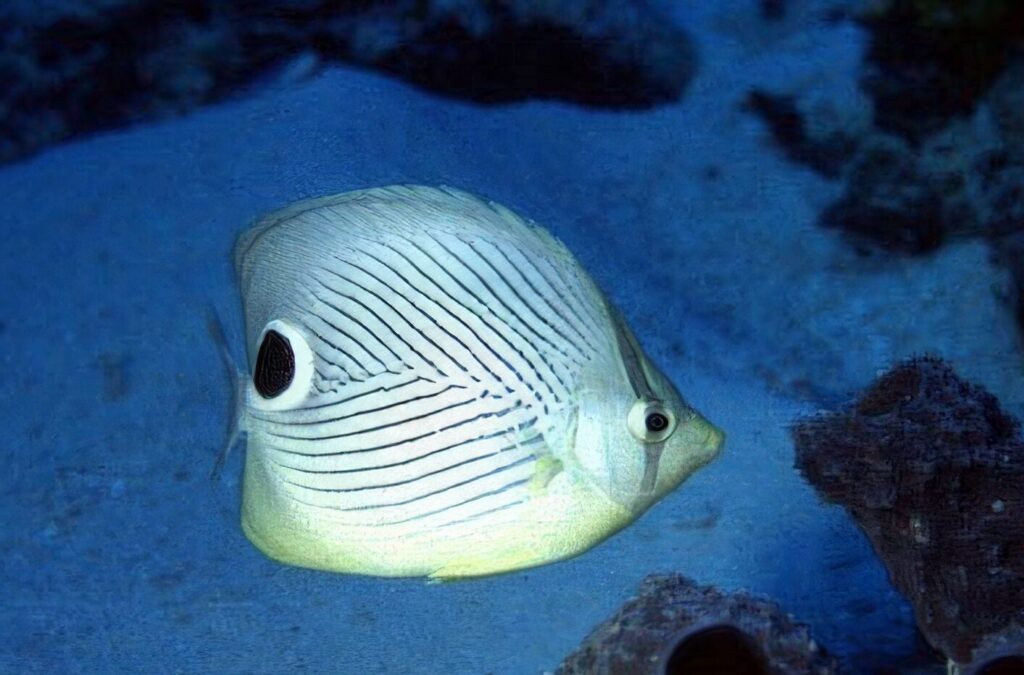
USS Parche: World War II Exploits and Commander’s Bravery
USS Parche (Sp. pronunciation Pahr-cheh) was a Balao class submarine used during World War II. One hundred and twenty boats completed of that type, the largest class of submarines in the United States Navy. An improvement on the earlier Gato class, these boats had slight internal differences. The most significant improvement was the use of thicker, higher yield strength steel in the pressure hull skins and frames.
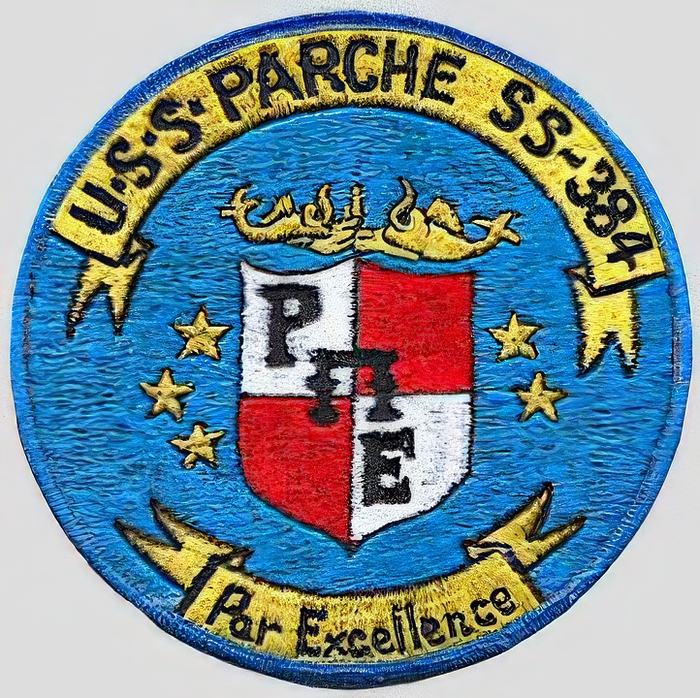
Her first Commander, Lawson Paterson “Red” Ramage’s, famous exploit occurred during Parche’s second war patrol when she joined Steelhead (SS-280) and Hammerhead (SS-364) for another wolf pack patrol in the Luzon Strait during June and July 1944. “Rather than seek refuge in a deep dive, CDR Ramage decided to engage in a close-quarter surface battle with the large Japanese convoy. Passing by the two escorting destroyers, Ramage cleared the bridge of everyone except himself and one sailor to man the deck gun. The Parche let loose three torpedoes from its bow tubes that hit one freighter and two tankers in the convoy. Now alerted by the explosions, the Japanese ships began to furiously maneuver, while firing machine guns and cannon fire toward their assailants.
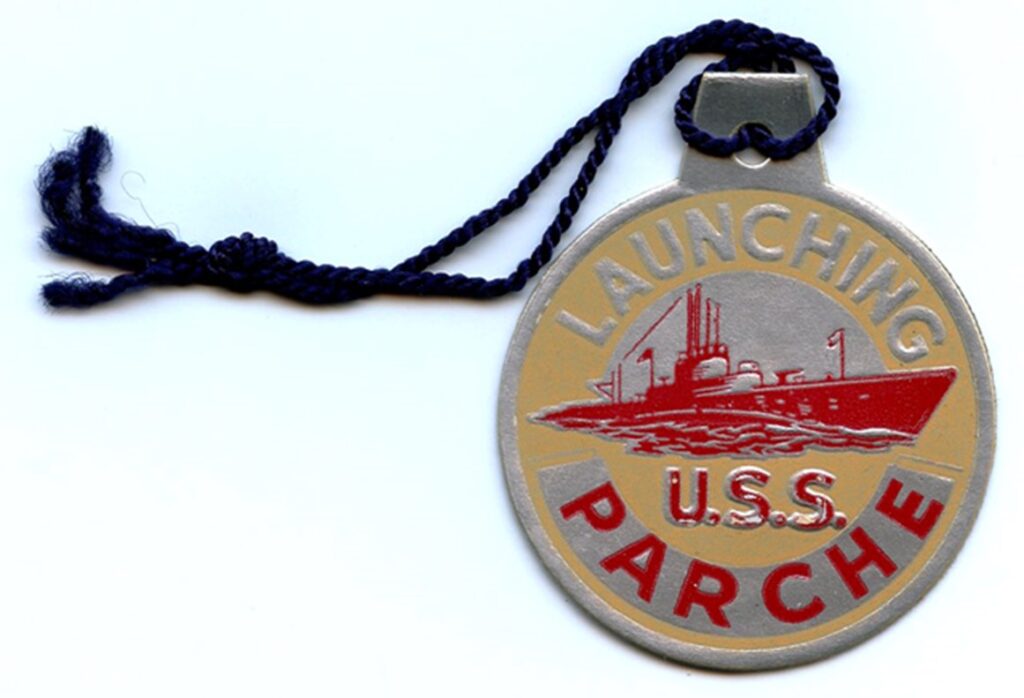
Upon Parche’s return to Pearl Harbor, Commodore Merrill Comstock read Ramage’s report of this remarkable engagement and stated, ‘This was foolhardy, very dangerous, and an undue risk. But I guess it’s okay as long as it came out all right. You got away with it, but don’t do it again.’ ” For getting mad, as Ramage described it, he was awarded the Medal of Honor, and the warship received a Presidential Citation.
USS Parche: Missions and Achievements
Parche had sighted convoy MI-11, 29 July 1944 and, cooperating with Steelhead, closed in, sinking 4,471-ton cargo ship Manko Maru and 10,238-ton tanker Koei Maru. During this night surface action Parche barely avoided being rammed by one ship. She collaborated with Steelhead in sinking a transport, the Yoshino Maru (originally the Kleist, built in Danzig, 1906). Steelhead sank two other ships, a transport and a cargo vessel. Another tanker and a cargo ship were damaged. The attack became known as “Ramage’s Rampage.” On 1 August the sub departed for Saipan where she moored 5 August, arriving Pearl Harbor 16 August.
This submarine was built by the Portsmouth Navy Yard at Kittery, Maine. Her keel was laid on 9 April 1943 and she was christened on 24 July. She was 311 feet in length, displacing 1550 tons on the surface and 2400 submerged. Powered by diesel electric her surface speed was 20.25 knots and she could make 8.75 submerged. Her range was 11,000 nautical surface miles at 10 knots. She could remain 48 hours at 2 knots submerged, and for 75 days on patrol. She had ten 21-inch torpedo tubes (6 forward, 4 aft) with a total of 24 weapons. In addition, she carried a 25 caliber deck gun, a Bofors 40 mm and Orelikon 20 mm cannon. Her ship’s complement was ten officers and seventy sailors.
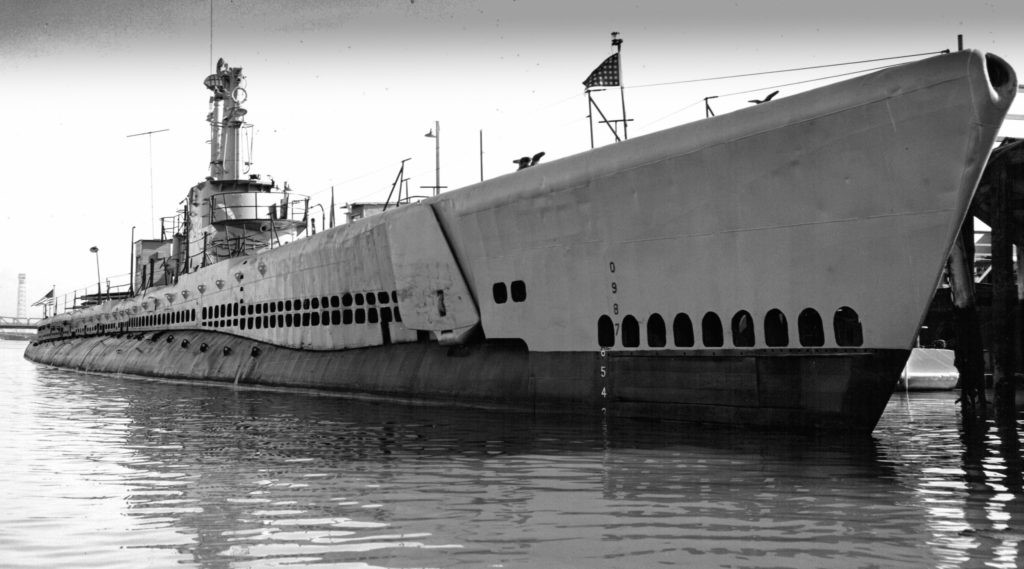
In all, the Parche was deployed on six war patrols, earning 5 Battle Stars, with a total of two casualties from about 195 men aboard between 1943 and 1945.
Navy TWS lists ten members who served on her.
Her first patrol began on March 29, 1944, as part of a wolf pack with the Tinosa and the Bang. They were able to destroy five Japanese ships during the outing, two of which were sunk by the Parche. During this operation, the Parche also surveyed the island Ishi Gaki Jima to determine the extent of its military installations. Her third patrol, a three month stint from September to December, was completed without encountering a single enemy vessel.
The hunting was better on her fourth patrol in the Nansei Shoto on December 30, 1944. She damaged two anchored ships on this mission and sank the Okinoyama Maru. In 1945, with targets becoming increasingly sparse as the Japanese grew weaker during the latter stages of the war, the Parche was sent off the coast of Japan itself for her fifth patrol. They found many targets, several of which she was able to sink, including a minesweeper and a small freighter. For her last patrol, the Parche joined the “Lifeguard League,” a group of ships assigned to pick up the survivors of any downed planes.

After being relieved of that mission, she was sent to the Tsugara Strait on patrol. She was able to sink several enemy ships including a freighter, two luggers, and several trawlers. On June 25, 1945, the Parche spotted a nine-ship convoy, an exceptionally large target so late in the war. She attacked the group, sinking one ship and damaging another, although she had to endure a four and a half hour depth charge attack once she’d been spotted before she managed to work away and resume her patrol, leaving an ex-Gunboat sunk and another ship badly damaged. After another round of lifeguard duty for the carrier planes of Task Force 38, on 17 July, Parche rendezvoused with Cero to take aboard three fliers and set course for Midway, arriving 23 July and to Pearl Harbor by the 28th.
USS Parche: Post-War Service and Legacy
After World War II, Parche was assigned to Operation Crossroads as a target ship for the atomic bomb tests at Bikini Atoll. Approximately 42,000 personnel were involved in Operation Crossroads, most of them on July 11, 1946; the target fleet of 95 ships waited in the lagoon of Bikini Atoll. The Task Force placed fifty-seven guinea pigs, 109 mice, 146 pigs, 176 goats, and 3,030 white rats on 22 target ships in stations normally occupied by people on board the various ships to study for diagnosis, treatment, and general protection of possible future ship crews which may be exposed to this bomb. The support fleet, consisting of more than 150 ships, withdrew to a distance of approximately ten nautical miles from the atoll. At 0900, the first bomb, named Gilda, was dropped from a B-29 bomber and detonated at an altitude of 520 ft above the fleet (missing its target point by 650 ft): Test on July 25th the Task Force conducted their first underwater nuclear explosion: Test Baker. This bomb detonated 90 ft beneath the surface of the water suspended there from LSM-60. Afterward, the Navy towed eight ships and two submarines to Hawaii for further radiological inspection. Twelve ships were deemed safe and crewed for their return voyage to the United States. Parche had survived both the air and underwater bursts, coming through relatively undamaged.

Between 1946 and 1958, a total of twenty-three nuclear tests took place at Bikini.
Following decontamination, she proceeded to Mare Island Naval Shipyard at Vallejo, California, where she was decommissioned in December 1946 and moved to join the reserve fleet in Alameda by March 1947; the Navy had 40 boats in this category.

“The USS Parche (SS-384) was a reserve boat from 1947 till 1969. It was located in Alameda, CA. I was aboard in 56/57 as a reservist. We were awarded the E for Excellence during this time, and it was presented by Adm. Nimitz himself. He was in full dress blue, what a treat for a 17-year-old.” – On December 1, 1962, her classification was changed to Auxiliary Submarine AGSS-384, and she was assigned as a Naval Reserve Training Submarine in Oakland, California. Parche’s name was stricken from the record on November 8, 1969, and in June 1970, she was for scrap. All that remains of her is the original bridge structure, shears, and upper gun, which reside enshrined at the Naval Submarine Base Pearl Harbor, and her conning tower barrel on display at another Balao class submarine, USS Bowfin museum and park nearby.
Her namesake vessel, the USS Parche (SSN-683), a Sturgeon class submarine, was commissioned on January 13, 1973. Attributed as a vital resource of the National Underwater Reconnaissance Office, the second Parche is the most highly decorated vessel in U.S. history.
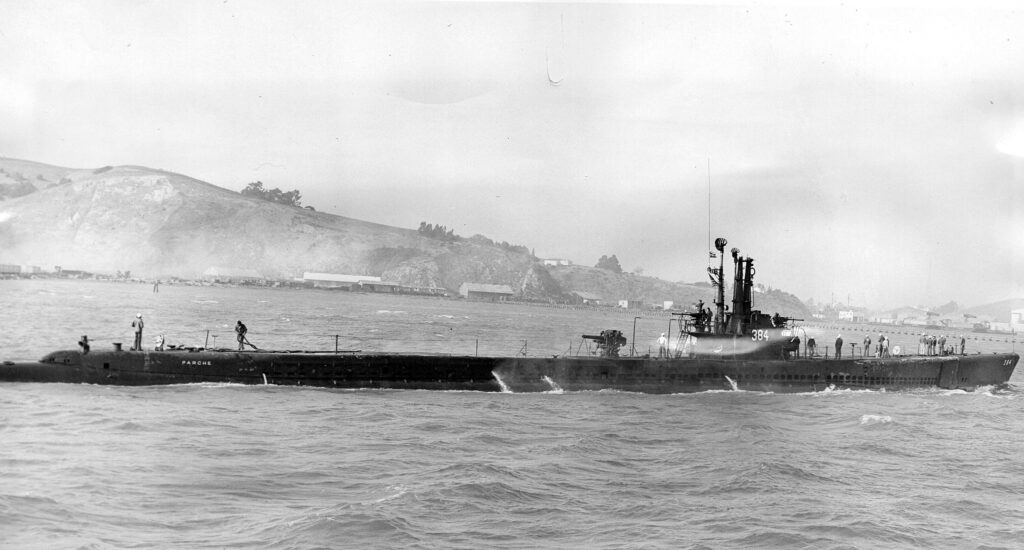
And for landlubbers, although the distinction between what is a boat like the Parche and what is a ship probably has as many definitions as there are vessels of either kind, the most common being that a ship can carry a boat, but not the reverse.
Read About Other Famous Military Units
If you enjoyed learning about USS Parche (SS-384), we invite you to read about other Famous Units on our blog. You will also find military book reviews, veterans’ service reflections and more on the TogetherWeServed.com blog. If you are a veteran, find your military buddies, view historic boot camp photos, build a printable military service plaque, and more on TogetherWeServed.com today.
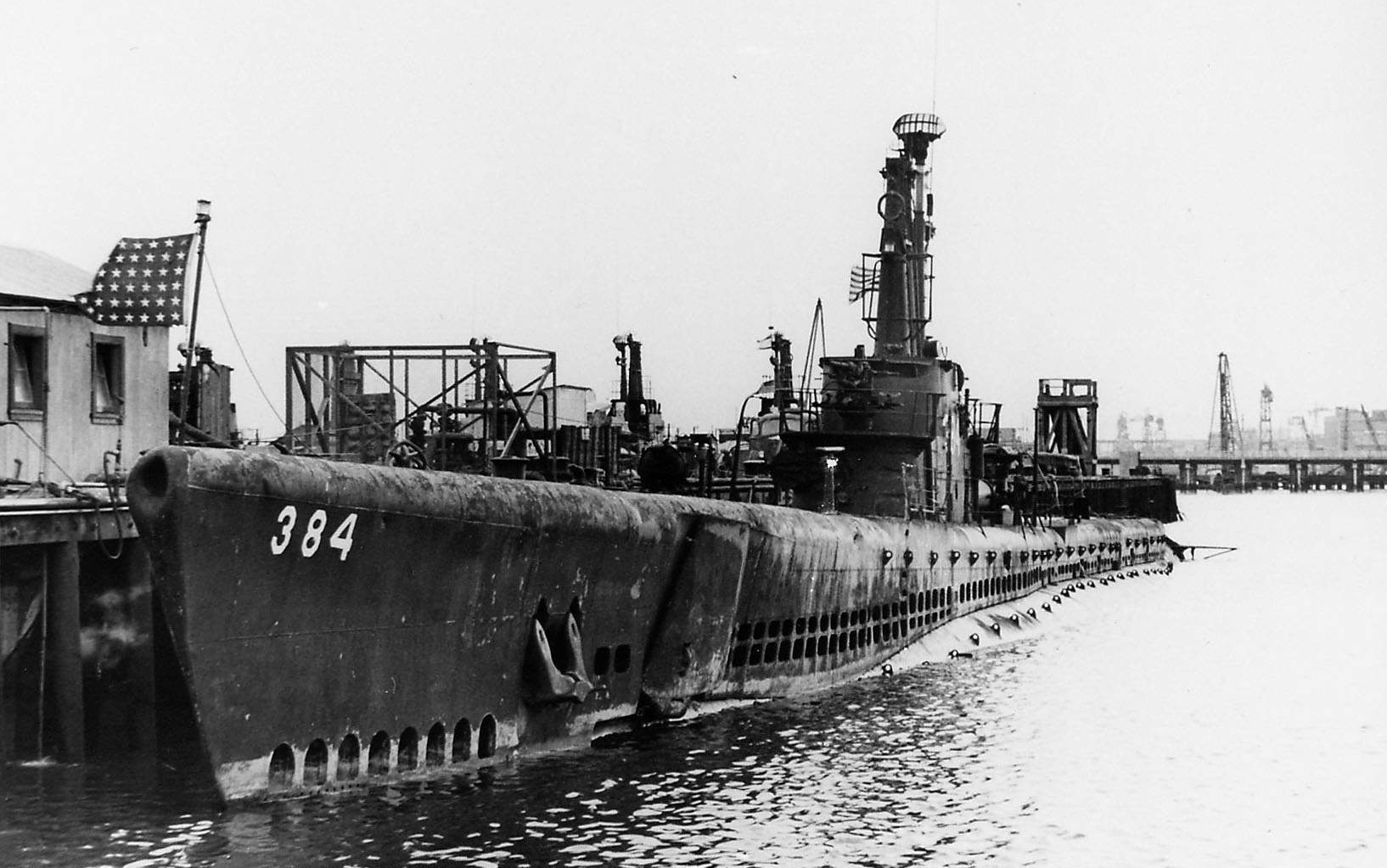
During 1969-1970 my last ship – USS CHARA(AE-31) left NWS CONCORD with the bridge/conning tower of the USS PARCHE entroute Pearl Harbor. The extra weight of this cargo affected the righting arm of CHARA – however our CO
Captain Dean Taylor USN provided calculations which provided the necessary steps to arrive safety in Pearl Harbor to offload at the Submarine Musem
My Grandpa, Glenn Meise, served as a radioman on the Parche during WWII. When I was able to see the bridge structure in Pearl Harbor, it really hit home after hearing his stories.